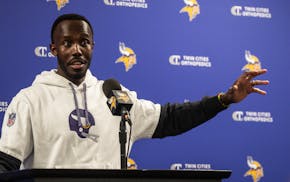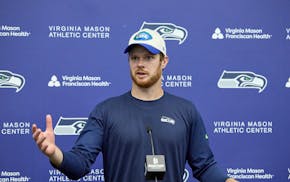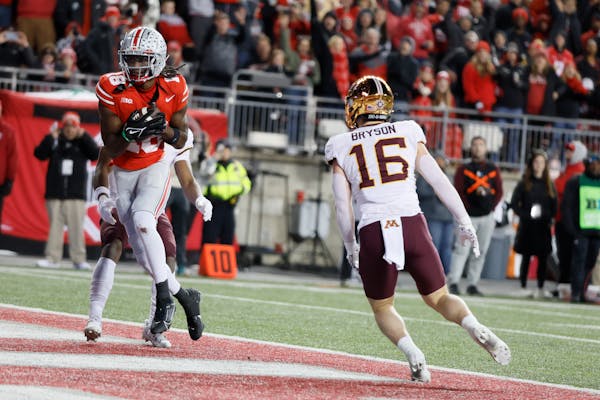This is the fourth in a series of position previews for the 2024 NFL draft, which begins April 25. Today: Running backs.
Offensive line | Edge rushers | Receivers
Vikings' outlook
The Vikings' rushing attack faltered in many categories last season: rushing yardage (29th in the NFL), rushing touchdowns (tied for last), rushing average (t-21st) and total carries (28th). That led to another change with the team releasing starter Alexander Mattison and signing former Packers starter Aaron Jones. Jones, who had over 8,700 yards from scrimmage and 71 touchdowns in seven Packers seasons, steps into the Vikings backfield as the unquestioned leader for next season. Cam Akers remains a free agent after suffering the second torn Achilles tendon of his career in November. The rest of the backfield remains in place, including fullback C.J. Ham and running backs Ty Chandler, Kene Nwangwu, Myles Gaskin and DeWayne McBride.
Chandler, entering his third season, made strides last year and had one big game with 157 yards from scrimmage at Cincinnati in December. Coach Kevin O'Connell called Chandler's year a "real positive," while also saying they expected to infuse the backfield with new talent. That could continue in the late rounds of the NFL draft or through undrafted free agents.
Vikings' level of need
Medium. Jones, the former Packers star, signed a one-year deal that allows him to see his former team at least twice next season and become a free agent again in 2025 when he's 30 years old. The Vikings' long-term outlook at running back remains unclear. Chandler's potential might be limited to being a committee member. Nwangwu hasn't shown much as a running back in three seasons, and he's entering a contract season. McBride, a 2023 seventh-round pick, had a rocky transition last year. The Vikings could use more talent to sort through potential long-term contributors this summer.
Three names to know
RB Jonathon Brooks, Texas: Brooks (6-foot, 216 pounds) is coming off an ACL tear that ended his season in November, but he still has a case to be the best runner in this class along with Tennessee speedster Jaylen Wright and Michigan's Blake Corum. He had a breakout season in 11 games, running for 1,139 yards, adding 286 receiving yards and cashing in 11 touchdowns. He's touted as an aggressive and nuanced runner for his age and experience level. Brooks is one of the younger prospects in this class. He turns 21 this summer.
RB Blake Corum, Michigan: The offensive engine for national champion Michigan, Corum gets compared to former Falcons star Devonta Freeman because of his compact frame (5-8, 205 pounds) and rare ability to evade tackles or bounce off them. He was dominant in college, racking up over 4,100 yards from scrimmage and 61 touchdowns mostly over the past three seasons. He didn't test as the most athletic runner in this class, but there's no doubting his on-field vision and elusiveness.
RB Trey Benson, Florida State: Benson, a former three-star recruit, transferred from Oregon and posted back-to-back seasons with 1,100 yards from scrimmage. He also had 24 touchdowns over the past two seasons. He has the typical size (6-foot, 216 pounds) of an NFL starter paired with top-end speed that included the third-fastest 40-yard dash among running backs at the NFL scouting combine (4.39 seconds). "Big back who might need to table his desires to be an elusive runner and adopt a more physical, decisive approach," NFL Media analyst Lance Zierlein writes.
One sleeper
RB Will Shipley, Clemson: Shipley, a former North Carolina state champion sprinter in high school, reportedly ran a 4.4-second 40-yard dash at Clemson's pro day, but that doesn't fully articulate his acceleration and agility that draft analysts have raved about. Shipley (5-11, 206 pounds) also caught 85 passes for 602 receiving yards over the past three years, making him one of the most experienced receiving backs entering a pass-centric NFL.
Souhan: For Lynx star Napheesa Collier, "Phee" is just fine

Young Twins starters called up from minors to fill out rotation
David Festa's return to Twins goes south in a hurry

Vikings GM talks to the Star Tribune about the team's 2025 outlook, McCarthy's trajectory


